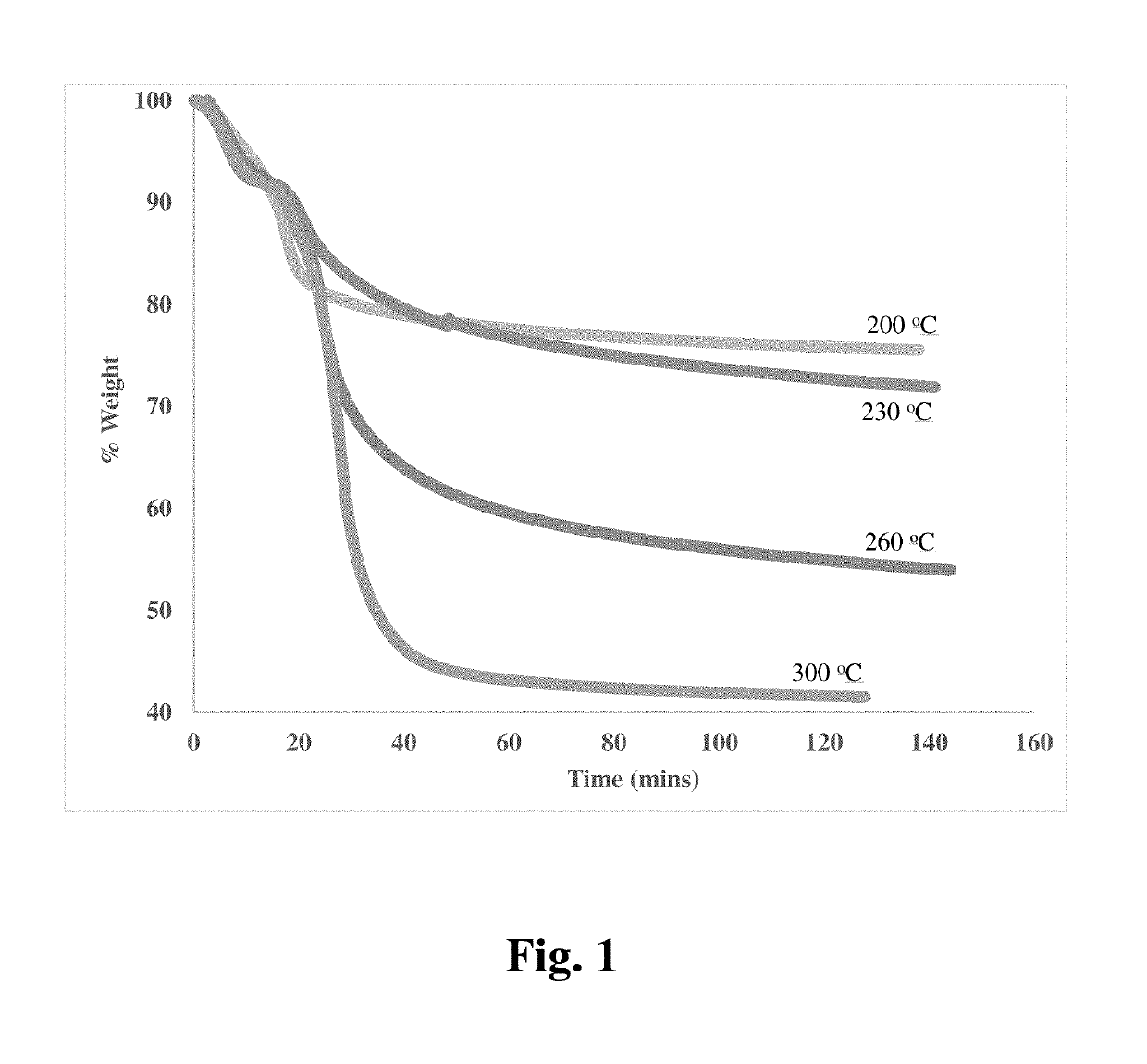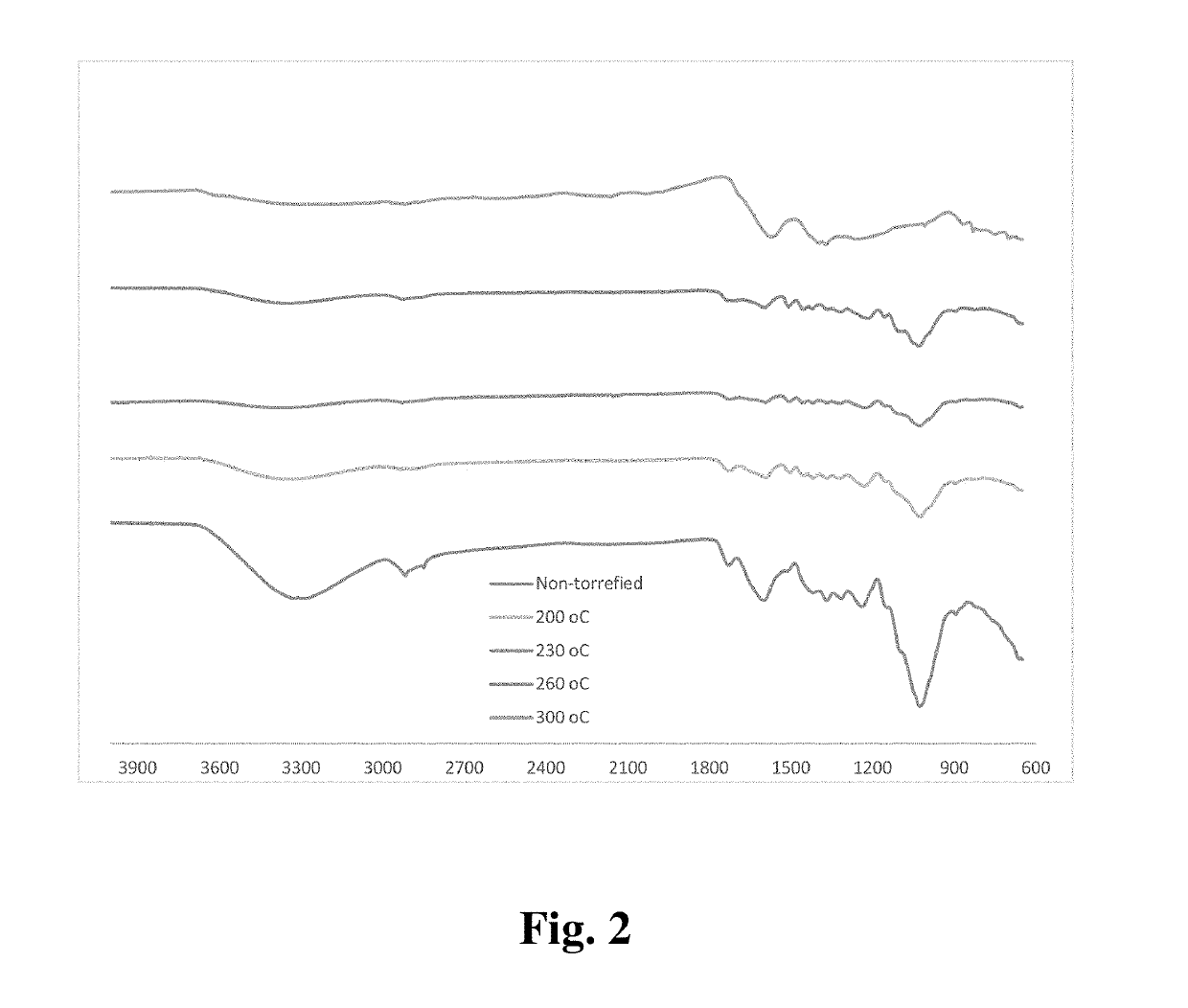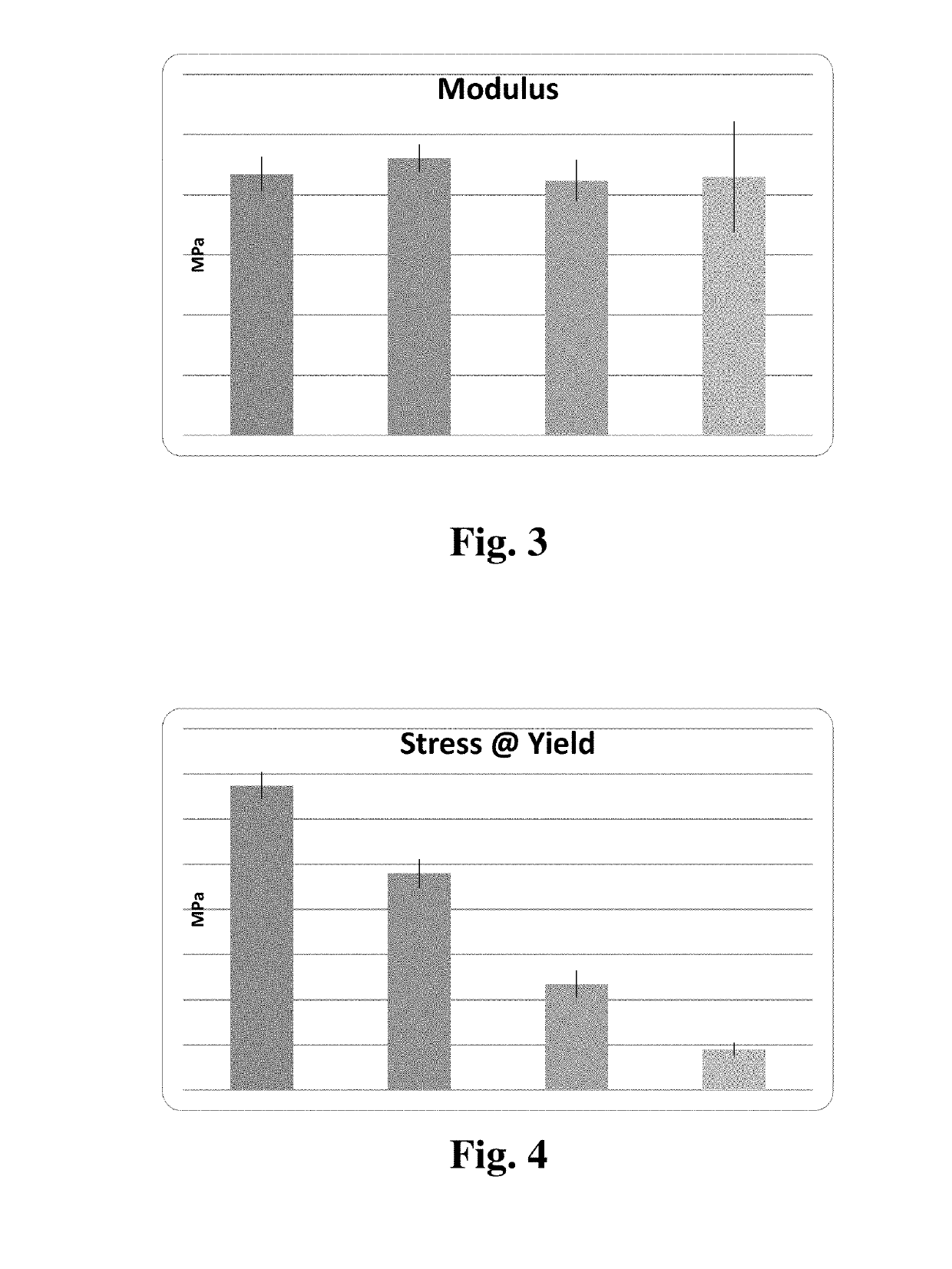Plastics containing torrefied biomass additives
a technology of biomass additives and plastics, which is applied in the field of polymer composite compositions, can solve the problems of reducing mechanical and thermal properties of materials, reducing the use of thermoplastics, and affecting the quality of materials, so as to improve mechanical, thermal and barrier properties, and improve the adhesion
- Summary
- Abstract
- Description
- Claims
- Application Information
AI Technical Summary
Benefits of technology
Problems solved by technology
Method used
Image
Examples
example 1
on of Torrefied Almond Shells
[0055]Prior to torrefaction, the shells were ground using an industrial Wiley mill. Thermogravimetric analysis under nitrogen was performed before the torrefaction procedure to optimize the torrefaction temperatures. Two criteria were established: (1) increased hydrophobicity of the biomass and (2) relatively high yields after torrefaction. The increased hydrophobicity would result in improved fiber adhesion to the polymer matrix, providing improvements in mechanical and thermomechanical properties of the biocomposites. Secondly, yields greater than 50 by weight % of the starting biomass were sought in order for the process to be economically viable. The torrefaction temperatures of ground almond shells were at different temperatures, such as 200°, 230°, 260°, and 300° C., are shown in FIG. 1. The yield at 260° C. was roughly 60 by weight % of the starting material. It was also observed (FIG. 2) that a significant amount of the —OH groups (stretch betwee...
example 2
on of Torrefied Walnut Shells
[0064]Prior to torrefaction, the shells were ground using an industrial Wiley mill. The shells were torrefied using a high temperature convection furnace. The size of the chamber limited the amount of biomass that could be torrefied at one time to approximately 1 kg. To prevent combustion of the biomass during the heating process, an inert atmosphere was maintained using nitrogen gas at a flow rate of approximately 150 mL / min. The biomass was heated to 260° C. and held at temperature for 1 h. The biomass was then allowed to cool to room temperature in the inert atmosphere. Thermogravimetric analysis (TGA) of the untorrefied and torrefied biomasses was conducted using a Perken Elmer Pyris 1 TGA. A temperature ramp of 10° C. per minute from room temperature to 500° C. was used to analyze the biomass. The torrefied walnut shells were ground further and then sieved to produce a particle size in the range of 100-200 microns.
[0065]Table 5 summarizes the effect...
example 3
on of Torrefied Sorghum
[0066]Table 6 summarizes the tensile properties of torrefied sorghum biocomposites. Torrefied sorghum was blended into recycled polypropylene at different loadings of 5-30%. The addition of torrefied sorghum surprisingly did not have an adverse effect on the tensile modulus and tensile strength of the recycled polypropylene. Moreover, at 30 by weight % loading, the composite surprisingly exhibited an increase in modulus, possibly due to the reinforcing effect of the filler. The tensile toughness decreased with increased loading of the filler.
[0067]Heat resistance of the neat recycled material were compared to the torrefied sorghum biocomposites (see Table 7). Very little change was observed for the HDT values of the biocomposites. However, at 30% loading, surprisingly the HDT value was ˜152° C., which was slightly higher than the neat recycled material. This may be attributed to the increased reinforcement, which was also observed in the tensile modulus (see T...
PUM
| Property | Measurement | Unit |
|---|---|---|
| molecular weight | aaaaa | aaaaa |
| melt flow index | aaaaa | aaaaa |
| melt flow index | aaaaa | aaaaa |
Abstract
Description
Claims
Application Information
 Login to View More
Login to View More - R&D Engineer
- R&D Manager
- IP Professional
- Industry Leading Data Capabilities
- Powerful AI technology
- Patent DNA Extraction
Browse by: Latest US Patents, China's latest patents, Technical Efficacy Thesaurus, Application Domain, Technology Topic, Popular Technical Reports.
© 2024 PatSnap. All rights reserved.Legal|Privacy policy|Modern Slavery Act Transparency Statement|Sitemap|About US| Contact US: help@patsnap.com










